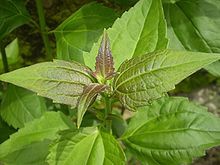The most popular local herb known as ‘acheampong’, (Chromolaena Odorata) which is mostly used domestically to suppress bleeding and also heals cuts, has been classified as toxic by the Red Cross Society of Ghana.
The Red Cross says the plant is acidic, therefore, if the juice is squeezed and applied to fresh cuts with the idea of reducing blood flow, it burns the tissues and cells around the wound and as a result weakens the skin texture.
Mr. Jonathan Hope, a first aid instructor from the Central Regional Wing of the Society made this observation at a training programme on ‘First Aid’, organized for some drivers of the Stool Lands Commission as part of the Central Region’s Road Safety Commission’s sensitization programme to reduce road accidents.
Administrators of Stool Lands Commission held a two–day national Mid-Year Review Conference in Cape Coast and to prevent their drivers from idling around, collaborated with the Road Safety Commission to train.
Mr. Hope said in cases of deep cuts when the wound requires to be stitched, the penetration of the needle would end up tearing the skin if it has already been treated with the 'acheampong' leaf.
To control heavy blood flow, the ‘Elevation Method’, by which the victim raises his or her hand above the heart level, he explained, would weaken the veins such that blood flow will be slowed.
Other things he listed as harmful to the skin when applied on fresh wounds include sprays, the juice from cassava peels and brake fluids.
He, in this regard, advised the public not to use such chemicals as first aid treatment in any case because they would rather worsen the situation.
The wounded area should rather be tied with a clean cloth and the victim immediately rushed to the hospital to seek medical attention, he advised.
The training focused on Defensive Driving and the causes and prevention of road traffic crashes.
In addition to the Commission’s training, the Red Cross Society was also invited to give tutorials on first aid during accidents, while an official of the Drivers’ Vehicle and Licensing Authority (DVLA) also took the drivers through ‘the Language of the Driving Profession,’ which was mainly the interpretations on the various road signs.**
Health News of Friday, 20 July 2012
Source: GNA
“Acheamopong” leaf is harmful to the skin - Red Cross

















